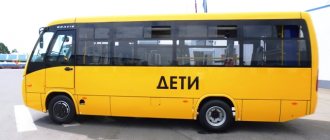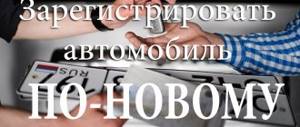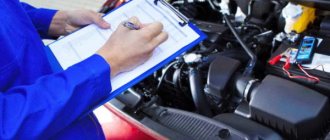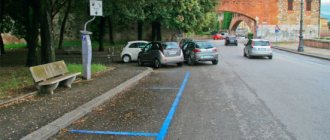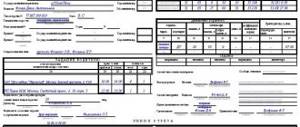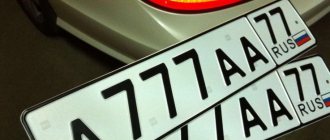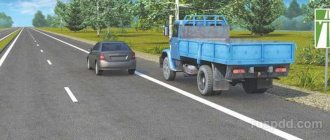Good afternoon, dear reader.
From January 1, 2021, a new law “On state registration of vehicles in the Russian Federation” should come into force. This document is quite voluminous and is discussed in 4 articles on pddmaster.ru: part 1, part 2, part 3, part 4.
Among other innovations, the law “On Vehicle Registration” states that if a car’s engine number or body number is destroyed, the car owner can restore these numbers. The VIN recovery procedure will be discussed today:
- What is additional marking?
- In what cases is an additional number applied?
- What does the additional marking look like?
- Where is the additional number applied?
- Which organizations can apply new numbers?
- What is needed to apply additional markings?
- How are the results of marking applied?
The regulatory document regulating the application of additional markings is Decree of the Government of the Russian Federation of December 12, 2021 No. 1653 “On approval of the requirements for additional marking of a vehicle, the procedure for its application and application.” It comes into force simultaneously with the law “On Vehicle Registration”, that is, on January 1, 2021 .
What is additional marking?
1. Additional marking of the vehicle (the main component of the vehicle) is the identification number of the vehicle (the main component of the vehicle), additionally applied to the main component of the vehicle in cases established by the Federal Law “On State Registration of Vehicles in the Russian Federation and on Amendments to certain legislative acts of the Russian Federation" (hereinafter referred to as the Federal Law, additional marking).
In simple terms, additional marking is another number that must be “stamped” on the body or engine of the car.
In what cases is an additional number applied?
5. Additional markings are applied if identification of a vehicle is impossible due to the fact that the marking of this vehicle or the marking of the main component of this vehicle has been destroyed due to corrosion or repairs, or has been tampered with, hidden, altered or destroyed due to illegal actions of third parties, as provided for in Part 2 Article 20 of the Federal Law.
There are several situations when an additional body or engine number may be stamped:
- the number has been destroyed by corrosion (the metal is rusty);
- the number was destroyed during repairs (for example, when straightening the body after an accident);
- the number was “interrupted” by hijackers.
Please note that in all of these cases, we are talking about the fact that the number was originally applied to the body or engine, but later it became unreadable.
Note. If the body initially did not have a VIN number, for example, when independently manufacturing a single vehicle, then the law does not allow applying an additional number to the body.
Interruption
To accurately determine the authenticity of the number, you should know how the interruption event is carried out. It is very important in this regard to be clearly informed. Thus, there are two concepts according to which the criminal business operates. The first of these implies the following scenario:
- First, the criminal steals a vehicle;
- He then tries to legalize the car in various ways, including outbidding Vin.
The second scenario goes like this:
- First, “clean” documents and, accordingly, a number are looked for;
- Then the car is searched for and stolen.
As a rule, there are also two ways to interrupt a number.
- Interrupting Vin by replacing some code symbols with others. This is a whole art that boils down to the fact that you need to be able to find symbols that are similar to each other. For example, the letter “Z” is somewhat reminiscent of the number “3”, and “9” can easily be converted into “8”.
- The second method involves body work. We have to replace the entire license plate by cutting out the old one and welding in the new one.
This type of procedure depends, of course, on where the sign is stamped. Domestic and foreign models of the old style, for example, are very complex in this regard. To knock out another plate on a car frame, you will have to remove the engine, grind down a certain area of the body with a milling cutter, and only then fill it with Vin.
It’s much easier with modern domestic cars and foreign cars. The VIN on cars of recent years of production is marked in the area of the upper part of the BC. Although interruption requires precision, criminals easily carry out the operation.
The traffic police had a special way of checking. She meant checking the welds. But recently, “specialists” have managed to cut out the front of the vehicle right up to the windshield, after which a new one is welded in its place. In such areas, it is much more difficult to check the seams, and it is no longer possible to do without special instruments.
Note. For checking “deep” seams, the Italian high-precision welding machine “Chilita” has proven itself well. One working day is enough to conduct testing.
There are known cases of flawless fake numbers. Only a real specialist can do this. But, again, it is possible to identify a fake if a competent examination is carried out.
The examination involves a complete visual inspection. So, if the work is done at a filigree level, of course, it will be almost impossible to notice any traces.
What does the additional marking look like?
3. Application of additional markings includes an indication of the identification number assigned by the vehicle manufacturer or the number of its main component, as well as the alphanumeric designation of the organization that carried out its application, which is used as:
- for certification bodies or testing laboratories (centers) - the organization code contained in the unique identification number of such an organization according to the information from the Russian part of the unified register of conformity assessment bodies of the Eurasian Economic Union;
- for organizations that manufacture vehicles - the international identification code of the manufacturer, the requirements for which are established by the technical regulations.
The specified alphanumeric designation (code) is entered on one line with the identification number through a separator (for example, the sign “*”) or on a separate line under the identification number with the specified separator placed at the beginning and end of it.
So, the new VIN consists of two parts:
- old VIN;
- code of the organization that applied the new marking.
Two parts of the code can be written on one line separated by the “*” symbol:
[old VIN]*[organization code]
The second recording option is in two lines. In this case, the “*” symbol is placed on both sides of the organization code:
[old VIN] *[organization code]*
What to do if a replacement is refused
Unfortunately, this also happens. If you refused orally, it is recommended to apply in writing, doing it like this:
- First provide the vehicle for inspection;
- Then prepare a paper with an appeal;
- Request from the authorities a written refusal with the reasons stated in it and a seal.
We must be prepared for the fact that in most regional traffic police the ceremony of action will have to be pushed through several times. Almost always, the car owner is checked, roughly speaking, for a “sucker”, requiring an allegedly “mandatory” set of certificates. These, for example, include various certificates or documents confirming the native engine of a foreign car, prepared in the country of the manufacturer.
If the traffic police's actions proceed in this direction, the car owner will have to take risks in the name of truth. You will need to submit a statement of claim and a collection of documents to go to court.
Today, the courts are simply inundated with claims and statements regarding the replacement of the body and various elements. Considering the sad experience, the arbiters of legal affairs, unfortunately, do not dare to take the liberty of putting a final point. Citizens are denied some questions, while others are referred to an incomplete collection of documentation.
We can only wait for some progress to be made regarding the issue of replacing the body. In the meantime, to replace the pad for the number, it is better to use the services of service centers.
Forget about fines from cameras! An absolutely legal new product - Traffic Police Camera Jammer, hides your license plates from the cameras that are installed in all cities. More details at the link.
- Absolutely legal (Article 12.2);
- Hides from photo and video recording;
- Suitable for all cars;
- Works through the cigarette lighter connector;
- Does not cause interference to radios and cell phones.
Where is the additional number applied?
4. Additional markings are applied to elements of the vehicle that have not been dismantled and (or) altered in close proximity to the place intended by its manufacturer for marking. If there is no technical ability to comply with such a requirement, the closest suitable place for this purpose is selected as the place for applying additional marking.
Additional marking is applied using an automated marking machine in compliance with the requirements established by paragraph 1.4 of Section 1 of Appendix No. 7 to the technical regulations of the Customs Union “On the safety of wheeled vehicles” (TR CU 018/2011), adopted by the decision of the Customs Union Commission dated December 9, 2011 N 877.
The location for applying the additional VIN is selected as follows:
- it should be as close as possible to the place where the old VIN was located;
- The location must be selected on an element of the vehicle that has not been dismantled (removed) or modified (not repaired).
For example, if the old body number was located in the spare wheel niche in the trunk, then the new VIN must be applied in the same niche.
Which organizations can apply new numbers?
2. Additional marking is applied:
- certification bodies and testing laboratories (centers) accredited in accordance with the legislation of the Russian Federation in the national accreditation system to carry out work to assess the conformity of products with the requirements of the technical regulations of the Customs Union “On the safety of wheeled vehicles” (TR CU 018/2011), adopted by decision Commission of the Customs Union dated December 9, 2011 N 877, included in the Russian part of the unified register of conformity assessment bodies of the Eurasian Economic Union in accordance with the Procedure for including accredited conformity assessment bodies (including certification bodies, testing laboratories (centers) in a single register of bodies for assessing the conformity of the Eurasian Economic Union, as well as its formation and maintenance, approved by decision of the Council of the Eurasian Economic Commission dated December 5, 2021 N 100;
- organizations that are manufacturers of vehicles included in the Russian part of the unified register of authorized bodies (organizations) of the member states of the Eurasian Economic Union and organizations that are manufacturers of vehicles (vehicle chassis), self-propelled vehicles and other types of equipment that issue passports (electronic passports) vehicles (vehicle chassis), self-propelled machines and other types of equipment in accordance with the Procedure for the formation and maintenance of a unified register of authorized bodies (organizations) of the member states of the Eurasian Economic Union and organizations - manufacturers of vehicles (vehicle chassis), self-propelled vehicles and other types of equipment that carry out the issuance of passports (electronic passports) of vehicles (vehicle chassis), self-propelled vehicles and other types of equipment, approved by decision of the Board of the Eurasian Economic Commission dated September 1, 2015 N 112.
There are only 2 options for organizations that have the right to issue new body and engine numbers:
- certification bodies and testing laboratories (the same organizations that issue documents for changing the design of a vehicle);
- automakers.
In general, there are few such organizations in Russia, so if you want to apply additional markings, it makes sense to study both registers (the unified register of conformity assessment bodies and the unified register of vehicle manufacturers). You need to look for an organization that is located closest to the location of the car.
What is Vin
ATTENTION! A completely simple way to reduce fuel consumption has been found! Don't believe me? An auto mechanic with 15 years of experience also didn’t believe it until he tried it. And now he saves 35,000 rubles a year on gasoline!
As you know, there are certain patterns and purely individual components according to which Vin numbers differ. Experts say that VIN is the same as the birth metric assigned to a car at the stage of its manufacture, and this is true.
The main purpose of the Vin number is protection against counterfeiting and various criminal frauds.
As a rule, there is no single world standard for Vin numbers. A certain manufacturer stamps Vin based on its own preferences, although they adhere to several basic canons.
The basics or canons for welding numbers are used by numerous automakers in 24 countries around the world. Everything is arranged in such a way as to eliminate coincidences. Thus, the release of similar Vins is not allowed for thirty years.
The same standards for Vin numbers are used in Russia. Everything is built according to a single system, eliminating the sameness.
What is needed to apply additional markings?
Let's consider paragraph 6 of the requirements, which provides additional information about applying body and engine numbers:
6. To apply additional markings to the organization specified in paragraph 2 of these requirements, the owner of the vehicle (his authorized representative) submits:
a) an application with which the owner of the vehicle applied to the unit of the State Road Safety Inspectorate of the Ministry of Internal Affairs of the Russian Federation, which is entrusted with the responsibility for providing state services for the state registration of vehicles (hereinafter referred to as the unit of the State Traffic Inspectorate), to carry out registration actions in relation to the vehicle funds in cases established by Federal Law, or a copy of this application certified by an authorized person of the State Traffic Inspectorate unit. The specified application (or its copy) is submitted with marks on it from an authorized person of the State Traffic Inspectorate unit, containing information:
- about the existence of grounds for applying additional markings in accordance with paragraph 5 of these requirements;
- about the vehicle identification number assigned by the vehicle manufacturer;
- about identification elements (seals, seals, tags) secured by officials of the State Traffic Inspectorate units on non-removable parts of the vehicle in places protected from the influence of the external environment (hereinafter referred to as seals);
b) passport of a citizen of the Russian Federation or other document proving his identity. The authorized representative of the vehicle owner additionally submits a document certifying his authority to represent the interests of the vehicle owner in accordance with the legislation of the Russian Federation;
c) a vehicle with seals applied by officials of the State Traffic Inspectorate unit.
1. Before contacting the organization to apply the marking itself, you need to visit the traffic police department .
Traffic police officers direct the driver to the procedure for applying a new number. At the same time they:
- seals are applied to vehicle elements (locations must be selected in such a way that the seals cannot be transferred or removed);
- enter information about the seals into the driver’s application;
- enter information about the original VIN number into the driver’s application;
- include information in the driver’s application about the reasons for applying additional markings (for example, the body number has been destroyed by corrosion).
2. After this, you can contact the organization directly to apply a new VIN . In this case, the driver must have:
- application with the above traffic police marks;
- passport;
- a car with seals installed.
Additional documents should not be required from the driver.
Changing the number officially, do it yourself
This is a responsible process that not every driver who has been using the car for more than one year can avoid. Under the influence of chemicals, various compounds, and a negative environment, the metal surfaces of the car frame are covered with corrosion spots and then destroyed.
- First of all, it is necessary to draw up a list of works required to restore the part. At this stage, the degree of defect and changes in geometric dimensions are diagnosed;
- The second stage involves work related to the elimination of identified defects in the body area on which the Vin number is stamped.
If the defects are minor, they can be restored without the use of complex tools and equipment. So, it is enough to just straighten and prepare the area for painting, without affecting the Vin number.
If the extent of damage is much wider, then a lot of work will be required. To return the body surface to its original shape, special rings designed for stretching are welded, and work is also carried out on the slipway. As a result of all these procedures, in 99 cases out of 100 the Vin number is damaged.
Initially, it is advisable to entrust the replacement of the platform with the number to a professional. Qualified service stations know how to carry out everything officially; they even have a special license that allows the implementation of this event. As a rule, after replacing the body platform, the owner is given the appropriate documentation confirming the replacement.
If the replacement is carried out independently, then to legitimize the procedure it will be easier from an official point of view to transfer the body:
- Prepare a paper detailing the essence of the appeal, reasons for the replacement, etc. for transmission to the traffic police;
- Prepare a permit certifying property rights;
- A document confirming the applicant’s identity and title to the car;
- Number plates;
- Certificate issued by the relevant authorities (customs, regulatory authorities, etc.);
- Mandatory insurance policies;
- A document that specifies all changes made to the design.
